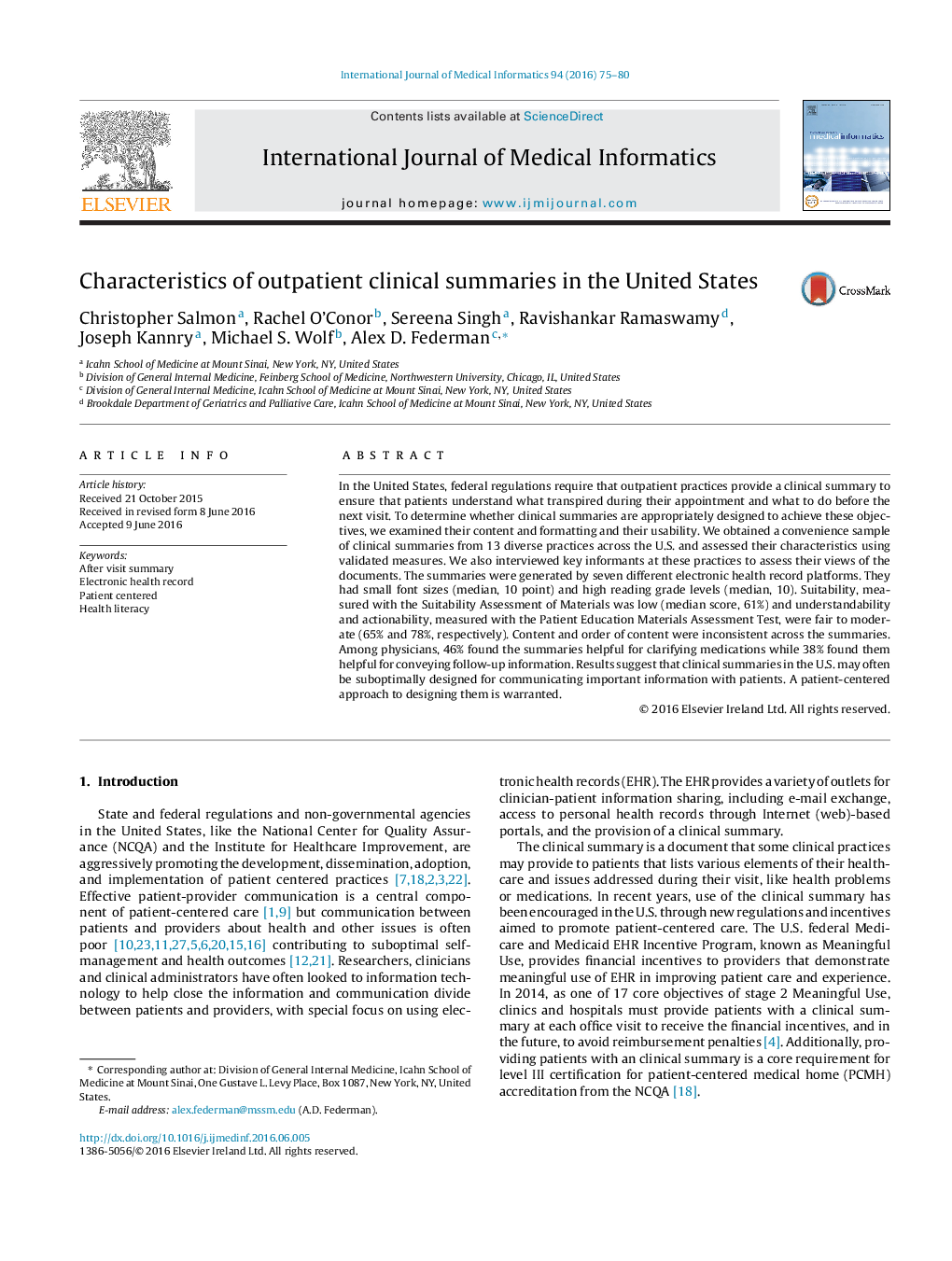| کد مقاله | کد نشریه | سال انتشار | مقاله انگلیسی | نسخه تمام متن |
|---|---|---|---|---|
| 515984 | 1449094 | 2016 | 6 صفحه PDF | دانلود رایگان |
• The outpatient clinical summaries we examined typically had small font sizes, were written at high reading grade levels, and were inconsistent in their formatting.
• Many summaries may not be optimally designed for communicating clinical information to patients.
• A patient-centered approach to designing clinical summaries is warranted.
In the United States, federal regulations require that outpatient practices provide a clinical summary to ensure that patients understand what transpired during their appointment and what to do before the next visit. To determine whether clinical summaries are appropriately designed to achieve these objectives, we examined their content and formatting and their usability. We obtained a convenience sample of clinical summaries from 13 diverse practices across the U.S. and assessed their characteristics using validated measures. We also interviewed key informants at these practices to assess their views of the documents. The summaries were generated by seven different electronic health record platforms. They had small font sizes (median, 10 point) and high reading grade levels (median, 10). Suitability, measured with the Suitability Assessment of Materials was low (median score, 61%) and understandability and actionability, measured with the Patient Education Materials Assessment Test, were fair to moderate (65% and 78%, respectively). Content and order of content were inconsistent across the summaries. Among physicians, 46% found the summaries helpful for clarifying medications while 38% found them helpful for conveying follow-up information. Results suggest that clinical summaries in the U.S. may often be suboptimally designed for communicating important information with patients. A patient-centered approach to designing them is warranted.
Journal: International Journal of Medical Informatics - Volume 94, October 2016, Pages 75–80
